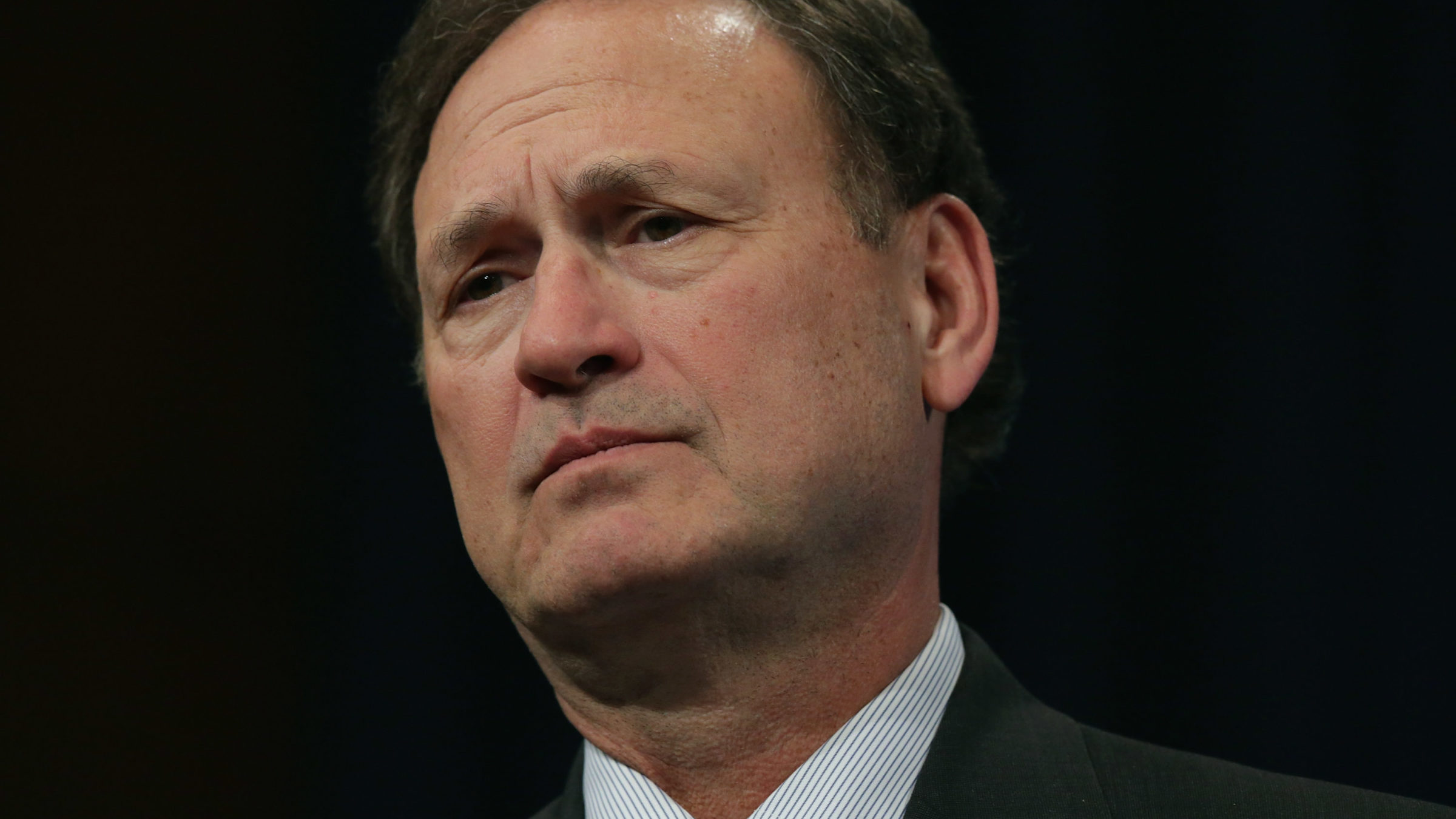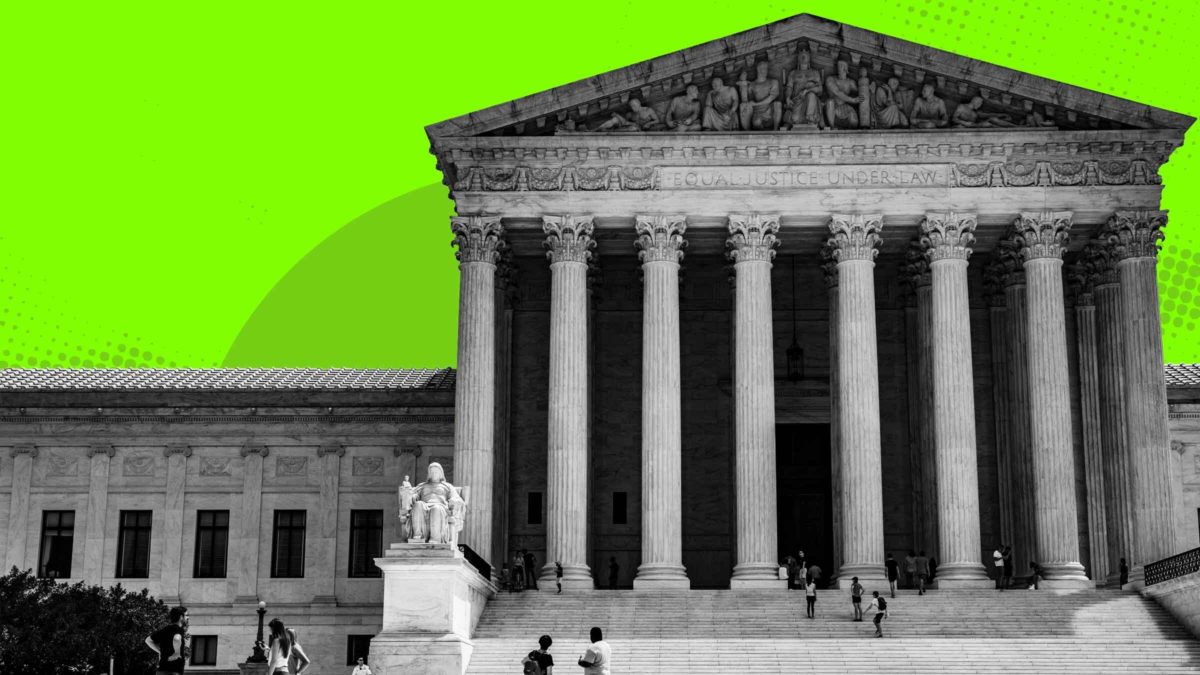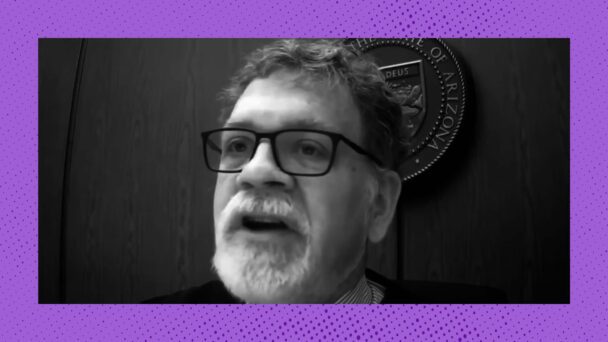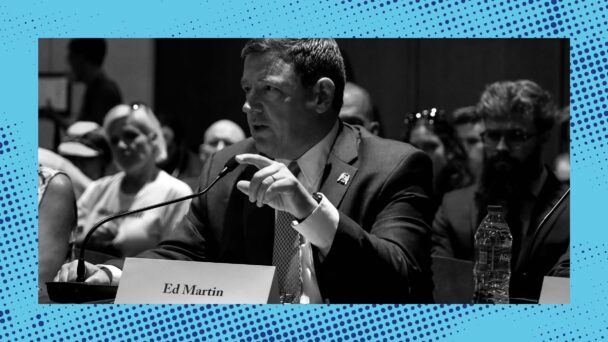Last week, the Supreme Court announced that it would return to its pre-pandemic practice of announcing its opinions in the courtroom, reading excerpts to the assembled journalists and members of the public before distributing the written opinions more broadly. But when it did, it missed a clear opportunity to make its opinion announcements easier for the public to follow: The Court could have announced that it would broadcast those opinion announcements to the public, too, using the tools it already uses to provide live audio of oral argument. Instead, the Court followed its overriding instinct to avoid scrutiny and accountability whenever possible.
The Supreme Court has always been one of America’s least democratic institutions, both in terms of who’s on it—nine unelected lawyers mostly from the country’s most elite law schools—and how it operates. This mindset pervades even relatively minor aspects of the Court’s operations, including how it releases its opinions. Before the COVID-19 pandemic, the folks in the Court’s chamber were treated to a brief summary of the main opinion from the author; if the author of the dissent felt particularly strongly, they would announce a summary of their opinion, too. But most people found out what the Court decided secondhand—from reporters stuck in an antechamber, feverishly reading the opinion as fast as they could and tweeting their thoughts or texting their editors.
This approach to dropping opinions had drawbacks. For about half an hour after the Court released its decision in a 2012 challenge to the Affordable Care Act, major news networks misreported that the Court had overturned key parts of the law—until their chief legal correspondents managed to get their hands on the second part of the opinion, in which Chief Justice John Roberts explained that he was upholding it. There was value in having the justices explain the reasoning behind their opinions: The judges who decided where to draw the lines around your rights had to explain why they did it. Meanwhile, dissenters got a meaningful opportunity to explain how they think the Court got it wrong—a platform that matters even more now that the liberal wing of the Court is locked into a 6-3 minority.
The pandemic forced the Court to change how it did business. With neither the public nor the press in the building, the Court adopted a meticulous system for releasing its opinions online at precise 10-minute intervals. (We all got the opinion at the same time and were able to misread it and jump to conclusions ourselves.) It also began streaming live audio of its oral arguments after resisting for years. The Court has recorded oral arguments since 1955, but until 2010, the public could only access those recordings the following term, meaning that people could wait for months to hear them. But the pandemic forced the Court to hold arguments over Zoom, which would have made limiting access to the first few hundred people even more arbitrary than before.
Which all makes the Court’s announcement this Monday that much stranger. The Court’s Public Information Office announced that the Court would go back to announcing its opinions from the bench. But the Court won’t stream live audio of those announcements. Instead, they’ll record the announcement and make the audio available starting the next term—just like it was back in 1955.

(Photo by Anna Moneymaker/Getty Images)
Sure, it’s a small thing. The Court’s opinions matter far more than the way they announce them. But the decision not to stream opinion announcements is just another example of the Court choosing to limit its transparency, even when providing it is easy. Although the room is already wired for sound, and the Court has plenty of experience streaming oral arguments, they can’t bring themselves to say they’ll just turn the microphones on a few minutes early. God forbid the American public get to hear Sam Alito explain his reasoning next time he rolls back a fundamental right.
This is how the Court has always acted—as if being able to see and hear them work will break the spell that gives them their power to decide who can access reproductive health care and who can’t. They resisted opening oral argument until a global pandemic forced their hand. Their cheerleaders in the media chafe at public protest of their decisions. While the Court is in session, they don’t even let you on their huge plaza to protest. And this isn’t limited to the right-wing justices. Democratic justices like Elena Kagan can speak passionately at their confirmation hearings about the importance of putting cameras in the courtroom. But after Kagan was on the bench for a few years, she told Congress that cameras could undermine “the way the institution operate[s].” Her fellow judges, she added, might begin to “filter themselves in ways that might be unfortunate.”
This is the total opposite of the way that government agencies in a democracy—even America’s shriveled and decrepit democracy—are supposed to think. A small-d democratic government, beyond being accountable to voters, is supposed to be transparent and accountable while it’s working, too. Public hearings, public records rules, open comment periods, and ethics rules for government employees are part of a suite of policies that ensure that an agency is accountable for what it does. Your local city council was more likely to have streamed its proceedings than the Supreme Court until the pandemic forced them to change their ways. Your state’s board of cosmetology probably has more opportunities for public comment than the Court, which can choose to allow a member of the public to submit an amicus brief or not. The federal Fish and Wildlife Service must bring far more evidence to support classifying a given species as endangered than the Court does to block the Service’s rules from taking effect.
You can even force administrative agencies at all levels to provide you with their emails and their text messages through public records laws. In most states, it’s as simple as sending an email to someone who works at the agency to say, “I’d like to see all your records related to this permit you granted.”

When someone asks if more transparency at your workplace would be a good thing (Photo by Chip Somodevilla/Getty Images)
To be clear, states (and the federal Freedom of Information Act) usually exempt judges from this level of scrutiny, because judges are supposed to explain why they’re doing what they’re doing in the text of their opinions. And I’m not suggesting we extend the Freedom of Information Act to the Court. (At least, not yet.) But to be fair, judges also aren’t supposed to leak upcoming opinions to their cronies in religious nonprofits (allegedly). If your local dogcatcher were using his government email address to let PetSmart know every time he was about to snap up a big batch of purebred puppies, you’d be able to find out about that special treatment. Meanwhile, if Alito emails a Focus on the Family staffer to let them know they should get ready to throw a party, we’d only find out if he accidentally copied Nina Totenberg on the email, and if Nina Totenberg then decided to publish it.
And it’s not just administrative agencies that have to operate under the limelight. Other courts already operate with more public access than the Supreme Court. Sometimes, they’re uncomfortably public. Texas streams all of its courts’ public operations, including all of their 40-some child protection courts. Many federal courts, in part because of the pandemic, now stream their hearings and trials or offer open call-in lines for the public to attend. Over half the federal circuit courts stream their oral arguments on YouTube, and the rest all stream their arguments somewhere else or directly on their websites. Federal district courts routinely offer call-in lines for interested members of the public to listen in.
This access hasn’t destroyed judges’ ability to decide cases. It’s just given people a chance to see how judges actually do their jobs. If that makes judges look bad, it’s only because of what those judges are doing, not the fact that we can see them doing it.
This isn’t to say that existing tools for democratic transparency are perfect. They’re all weak and often getting weaker. Many states require agencies to charge exorbitant fees for producing records, essentially requiring the public to bear the cost of open government. Like courts, legislatures are generally exempt from public records laws. And hardly anyone has the time or inclination to attend every public meeting that could affect their lives. Local news outlets used to pay the people who attended all those meetings, but they’ve been hollowed out by private equity funds.
But these tools are at least there. They exist. And the fact that those tools exist at all builds some credibility for what government does. It’s harder to complain when you had a chance to weigh in on a decision and decided not to. It’s harder to cynically write off an agency as furthering the interests of the industry they regulate if you can read their emails and find out the staff is struggling to make hard choices on a limited budget. If an agency isn’t doing anything wrong, transparency doesn’t erode trust; it builds it. But the Court’s impulse is always to conceal, never to reveal, and that impulse undermines trust.
The more power a governmental body takes on, the more transparent it should be, not less. The Supreme Court’s instincts have always run in the other direction. As it takes on more and more responsibility to intervene in how other governmental bodies operate, it’s only more troubling that the Court fails to follow up on easy opportunities to increase public access to its work.




